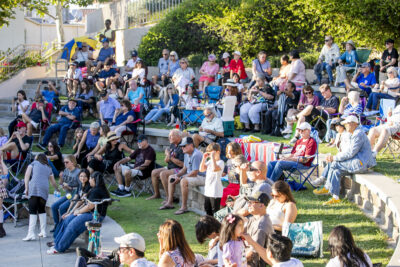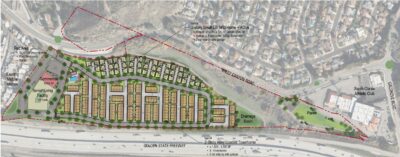
In today’s fast-paced world, style and accessories play a crucial role in defining who we are and how we connect with our communities. From fashion choices to unique personal touches, these elements help us express our identity and foster a sense of belonging. We’re not just dressing for ourselves; we’re making statements that resonate with those around us. For example, a timeless accessory like TAG Heuer Watches for Women can reflect both elegance and individuality, allowing wearers to carry their personality into every social interaction.
As we navigate through diverse social landscapes, our style becomes a visual language that communicates our values, beliefs, and affiliations. Whether it’s through vibrant streetwear or sustainable fashion choices, the way we present ourselves can significantly impact our community identity. Even in everyday life, practical yet stylish wardrobe staples, like mens stretchy dress pants, illustrate how functionality and fashion can merge to create a strong sense of personal expression.
Join us as we explore how these elements shape our interactions and influence the communities we’re part of, showing how fashion is not only about appearance but also about connection and belonging.
Understanding Community Identity
Community identity emerges from shared experiences, values, and cultural expressions. Style and accessories significantly contribute to this identity, acting as external indicators of internal connections. Through fashion, individuals express their belonging to specific groups, creating a sense of unity among members.
- Cultural expression: Various styles reflect cultural backgrounds. Traditional garments often represent heritage, while contemporary trends embody evolving values. Accessories like jewelry or headwear can signify affiliation with particular communities or social movements.
- Subcultural affiliations: Fashion choices frequently signal subcultural identities. Styles like punk, goth, or hippie carry distinct meanings that resonate within their respective groups. These looks foster pride and encourage solidarity among members, strengthening community bonds.
- Inclusivity and diversity: Modern communities embrace diversity, often encouraging inclusive fashion choices. This acceptance allows for greater expression of individual styles, melding different influences into a cohesive community identity. Accessories play a crucial role, enabling personalization while still aligning with group norms.
- Social movements: Fashion serves as a vehicle for social change. Movements advocating for equality and sustainability often utilize style as a form of protest. Wearing specific symbols or supporting sustainable brands connects individuals to broader causes, enhancing community awareness and collective identity.
- Local influences: Neighborhoods often develop unique styles based on local culture and history. Urban fashion scenes frequently draw inspiration from street art, music, and local history, shaping distinct identities. These localized styles foster connections among residents who recognize and celebrate their shared environment.
Understanding community identity involves recognizing how style and accessories reinforce connections among individuals. As we navigate our roles in various communities, our fashion choices continue to shape and reflect our identities.
The Impact of Fashion Style
Fashion style significantly influences how we express ourselves and form community connections. Our choices in clothing and accessories reveal our values, beliefs, and cultural affiliations.
Expression of Individuality
Fashion provides a unique platform for personal expression. We embrace distinctive styles through our clothing, colors, and patterns that reflect our personalities. Individual pieces or accessories, such as statement jewelry or custom sneakers, allow us to showcase creativity. We can also blend trends from multiple cultures, reinforcing our identity while celebrating diversity. By curating our fashion choices, we craft our personas and communicate messages about who we are to others.
Collective Identity Formation
Fashion style contributes to the formation of collective identities within communities. We often adopt trends that resonate with groups we identify with, creating a sense of belonging. Styles, such as streetwear or cultural garments, link us to shared experiences and values, promoting unity among members. Group-specific fashion fosters recognition and solidarity, signaling our alignment with particular ideologies or causes. By participating in collective wardrobe choices, we affirm our connection to the community and strengthen interpersonal bonds.
The Importance of Accessories
Accessories play a vital role in shaping community identity, enhancing personal expression while signaling affiliation with specific groups. Their impact goes beyond mere aesthetics to encompass deeper social meanings.
Symbolism and Social Status
Accessories often signify social status and convey messages about wealth and success. Items like designer handbags or luxury watches serve as status symbols, communicating prestige and exclusivity within communities. Additionally, accessories can indicate professional roles or affiliations, such as uniforms or specific jewelry representing organizations. This symbolism fosters connection among those who share similar values or aspirations, reinforcing social hierarchies and establishing a sense of belonging within the group.
Cultural Significance
Accessories also reflect cultural identity and heritage, as they represent traditions and practices unique to specific communities. Items such as anklets, turbans, or specific religious symbols showcase individual and collective identities, celebrating the diversity within communities. By embracing cultural accessories, individuals express pride in their backgrounds and foster connections with others who share similar experiences. This richness in cultural expression can unite members and enhance our understanding of each other’s histories, strengthening the fabric of community life.
Community Identity Through Style
Style and accessories serve as powerful indicators of community identity in various settings. By examining urban and rural contexts and the influences of different cultures, we gain insight into how style shapes our collective identities.
Urban vs. Rural Settings
Urban and rural environments influence community identity through distinct fashion styles. Urban areas often embrace trends that reflect diversity, innovation, and rapid changes, evident in the prevalence of streetwear and avant-garde accessories. These styles foster a sense of belonging among residents and communicate values such as creativity and individuality. In contrast, rural settings tend to showcase traditional attire and functional accessories, linking individuals to their heritage and local customs. Denim jeans and work boots exemplify practical choices that highlight community ties and shared experiences. Ultimately, the contrasting styles in urban and rural contexts reveal how our fashion choices express identity and solidify connections.
Influences of Different Cultures
Cultural influences significantly shape community identity through fashion. Globalization has led to the cross-pollination of styles, allowing diverse communities to share and incorporate elements from various cultures. For instance, the rising popularity of African print clothing in Western fashion reflects a growing appreciation for cultural heritage and tradition. Similarly, Indigenous accessories, such as handmade jewelry, provide insight into ancestral stories and promote cultural pride. These cross-cultural exchanges foster unity, celebrating our distinct backgrounds while creating a rich tapestry of community identity. Thus, the blending of styles showcases our interconnectedness and demonstrates how cultural influences mold our shared identity. For deeper insights, check out The Fashion Institute of Technology for expert perspectives on the intersection of style and identity..






